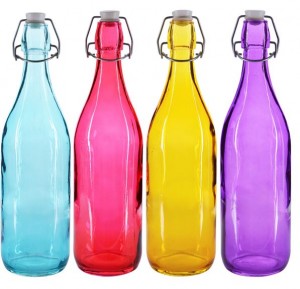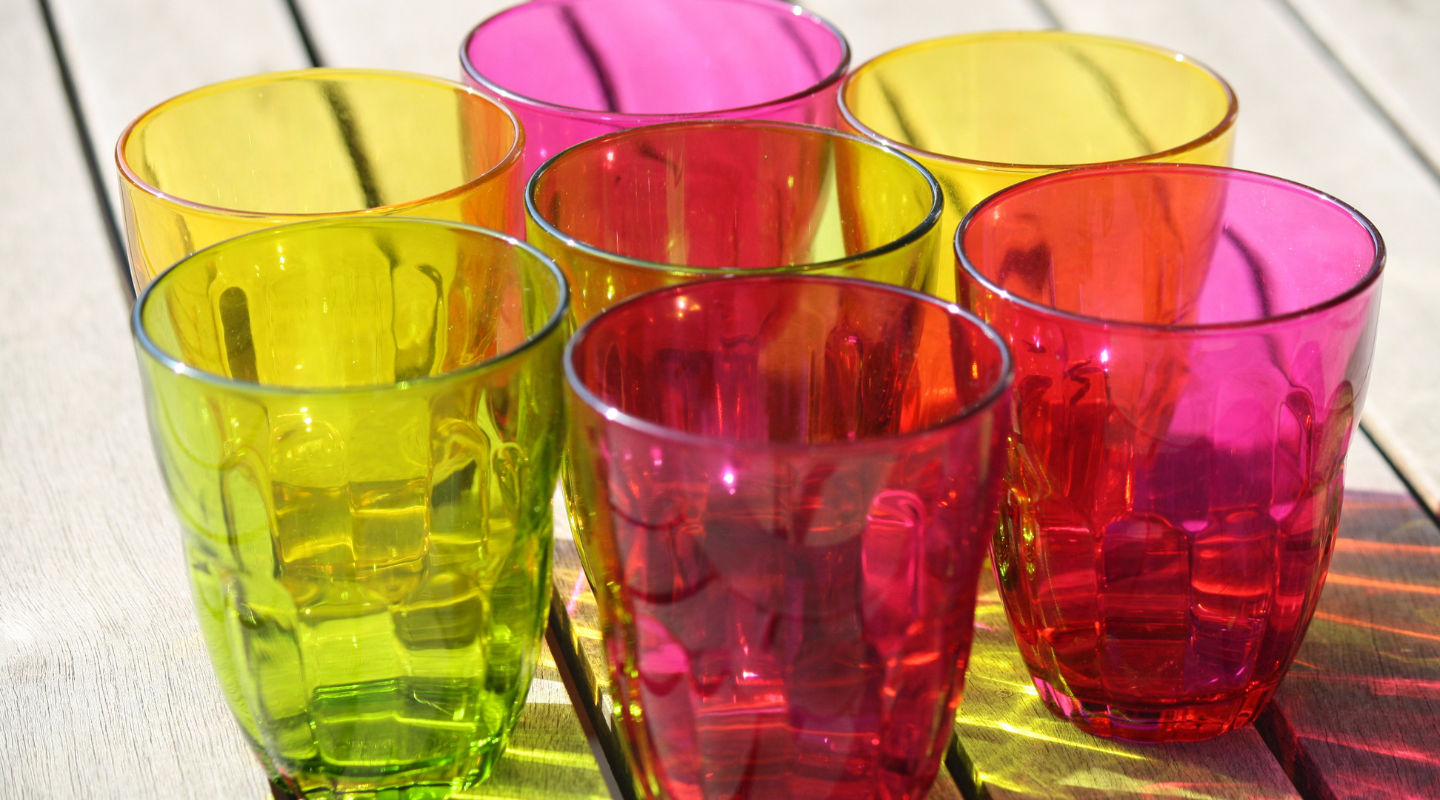
Colour plays an important role in the recycling process of glass. If we throw green bottles with brown ones, and clear ones, our glass will have mixed colours in the end. It might sound creative, but the colour of glass actually has a purpose. You’ve probably wondered why different goods come in different colours of glass. We often find beer in brown glass, while you will expect your bottle of white wine to be coloured green or clear. Glass is essentially inert, so it will not affect the taste of your product at all, but the colour of the glass itself can affect certain goods.

Clear glass does not shield the product contained in the glass from light. It is mostly used for food, water, alcohol…Overall products that are not affected by light.
Green glass offers a bit more light protection. Liquids such as wine or juice can be exposed to sunbeams, so that explains the green bottles for wine.
Brown, black and UV glass offers the best protection against light. The taste of beer could be ruined by light absorption, which is why it mostly comes in brown bottles. It absorbs the most ultraviolet radiation so you don’t get a beer that is ‘light-struck’, as they call it.
These days many companies use coloured glass to distinguish their beer bottles from others. Glass can be UV protected to prevent it from tasting funny by light exposure. Which means mostly producers nowadays use coloured glass for aesthetic & branding reasons. However, for the recycling process it remains important to separate colours.
Recycling does not compromise the quality of glass, and there are no toxins produced in the process, so it is totally safe. For more info and to find a recycling center close by, go to www.earth911.com/recycling-guide/how-to-recycle-glass-bottles-jars/.




